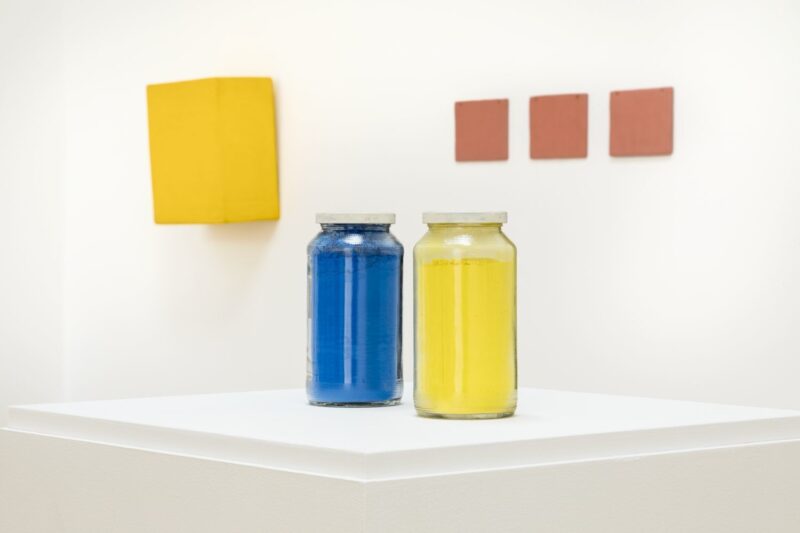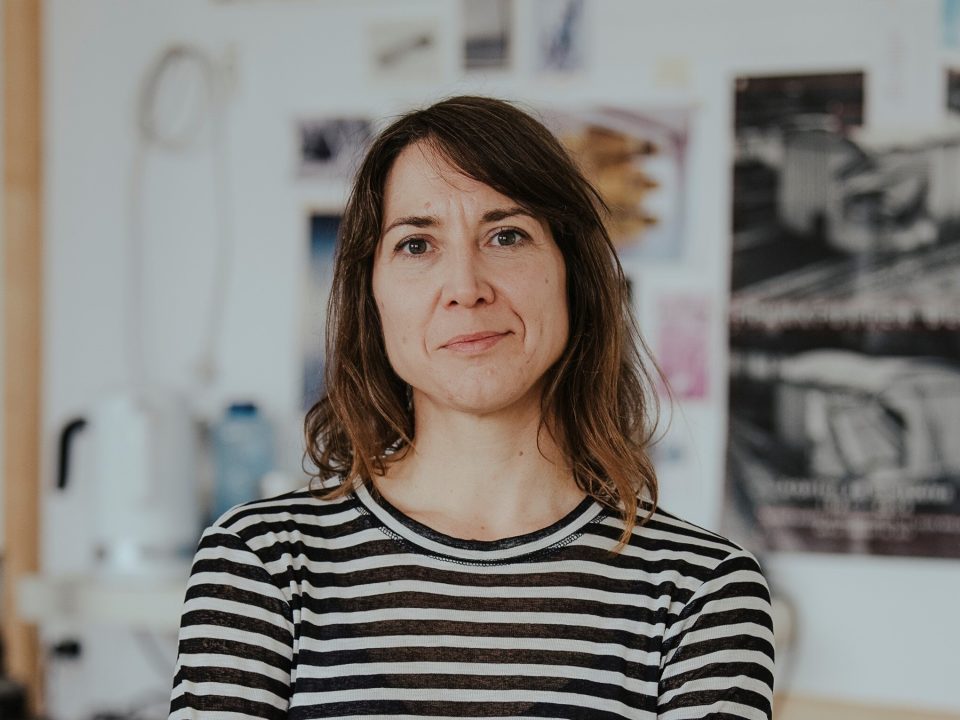This blog series is an homage by four former students of the artist and teacher Franz Erhard Walther. In a poetic, fragmentary and anecdotal manner, they speak of formative memories from their study years, as well as of the longing, praise and uncertainties in their search for their own artistic language. For us, they have a look back in time.
To write a text about Franz, his work and his teaching, means to deal with terms: terms such as ‘work action’, ‘work form’ and ‘storage form’, which he coined and defined and by means of which both his way of thinking and his artistic position are articulated. Before I came into contact with Franz’s actual artworks as an art student at the University of Fine Arts Hamburg in 1999, that is to say before the omnipresence of the internet, I came across terminologies in his work discussions that seemed to offer me a sense of orientation within the strange and fascinating world of art.
The fact that it was terms that tipped the scales for me to want to study with Franz is on the one hand logical and on the other hand paradoxical. The paradox lies in the fact that, in my parental home, the validity and quality of a statement or decision was assessed on the basis of its linguistic and logical argumentability. The attraction that art—or more precisely, making art, being an artist—exerted on me was based not least of all on the fact that it legitimately evaded or even opposed logical argumentation. I never doubted that artistic decisions are by no means arbitrary but must withstand a kind of inner validation that takes place outside language. For me, making art and explaining art were contradictory, but I needed language to orientate myself within the ‘art system’, although I was indeed keen to strengthen my inner voice from the very beginning.

In his work, Franz argues with linguistic means, but he never abandons the perspective of the visual artist. His art does not turn away from the everyday world—it expands it. My own art feeds on urban landscapes, psychosocial states of interaction, pop culture and subculture. Industrial wastelands, empty shops, construction sites, and ruins of new buildings fascinate me as places where intentional and unintentional design intertwine. They are places in an intermediate state, where economic conditions and political events have inscribed themselves into the appearance of cities—for example, by incorporating protest cultures into the commercial cycle through fashion, advertising, and shop window decorations.
The moment of potentiality, as well as of contradiction, is inherent in these phenomena, and it has always been a ‘key stimulus’ for me. Looking back, I can recognise in this the reason for the resonance that Franz’s work and teaching has with me.
His artistic practice includes various states of a work, which are on par with each other with regard to their validity. The dimension of possibility is part of the work. Much more clearly than when I was studying, I am now aware of the extent to which Franz’s work contains the utopia of a new society precisely because of this dimension of possibility.
His works are activated by humanness. By including the moment of time, of action, of the ephemeral, they are—despite all their clarity and formal determination—a plea against the monumental, the eternal, and the purportedly immutable.
"A handful of plaster, which I throw into the space — this is a sculpture." (Quote from her memory of Franz Walther)
Stef Heidhues (*1975) was born in Washington D.C., USA and lives in Berlin. From 1999 to 2005, she studied fine arts with Franz Erhard Walther at the University of Fine Arts in Hamburg. Heidhues develops her work based on urban contexts, utilitarian objects and through the exploration of social spaces as well as psychological and physical conditions. In the exhibition, the individual sculptures are intentionally arranged so their lines and surfaces dynamically respond to one another and even assume the quality of spatial drawings.
Read more artist texts of this series written by Peter Piller, John Bock and Christian Jankowski.
